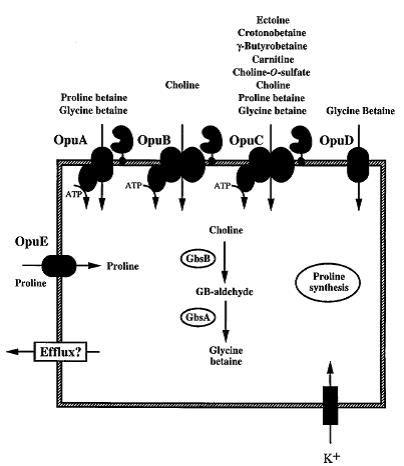การปรับตัวของไซยาโนแบคทีเรียภายใต้ภาวะเครียดจากเกลือ
Main Article Content
Abstract
Surasak Laloknam
รับบทความ: 13 ธันวาคม 2553; ยอมรับตีพิมพ์: 24 กุมภาพันธ์ 2554
บทคัดย่อ
ไซยาโนแบคทีเรียเป็นสิ่งมีชีวิตชนิดโพรแคริโอตที่สามารถสังเคราะห์แสงได้ มีการนำไซยาโนแบคทีเรียไปใช้ประโยชน์ในหลายด้าน เช่น การเกษตร การอุตสาหกรรมอาหาร เภสัชกรรม และงานวิจัยทางด้านวิทยาศาสตร์และเทคโนโลยี เป็นต้น โดยเฉพาะการวิจัยที่เกี่ยวข้องกับพืชจะมีการศึกษาเบื้องต้นในไซยาโนแบคทีเรียก่อนเนื่องจากมีกลไกที่ใช้ในการสังเคราะห์แสงคล้ายพืช จากการศึกษาความสามารถของสิ่งมีชีวิตในการเจริญภายใต้ภาวะเครียดจากเกลือ พบว่า ไซยาโนแบคทีเรียมีกลไกในการปรับตัวให้เจริญ ภายใต้ภาวะเครียดจากเกลืออย่างน้อย 2 กลไก ได้แก่ การแลกเปลี่ยนไอออนระหว่างเซลล์กับสิ่งแวดล้อม และการสะสมสารออสโม-โพรเทคแทนต์ การแลกเปลี่ยนไอออนใช้โปรตีนที่อยู่บริเวณเยื่อหุ้มเซลล์ ในขณะที่สารออสโมโพรเทคแทนต์เป็นสารที่โมเลกุลขนาดเล็กช่วยลดแรงดันออสโมติกของไซยาโนแบคทีเรีย และเป็นสารประกอบอินทรีย์ส่วนมากเป็นกรดอะมิโนและอนุพันธ์ของกรดอะมิโน เช่น ไกลซีนบีเทน และโพรลีน มีการสะสมโดยนำเข้าสู่เซลล์หรือการสังเคราะห์ขึ้นภายในเซลล์
คำสำคัญ ไซยาโนแบคทีเรีย ภาวะเครียดจากเกลือ ออสโมโพรเทคแทนต์
Abstract
Cyanobacteria are photosynthetic prokaryotic cells. There are many applications in various fields, for example, agriculture, food industries, pharmaceuticals, as well as science and technology researches. Especially, in researches about plants, the preliminary study has been done in cyanobacteria since they have the mechanism as photosynthetic system in plants. The study in organisms’ growth ability under salt stress condition revealed that cyanobacteria have at least two mechanisms to adapt their growth under the salt stress condition: the ion-exchanger between cell and environment and osmoprotectant accumulation. The ion-exchanger is a membrane protein whereas osmoprotectant is a small molecule to reduce osmotic pressure of cyanobacteria. Osmoprotectant also occurs in organic compound, and almost is amino acid and its derivatives, for instance, glycine betaine and proline, which accumulate by uptake from environment or synthesis within cell.
Keywords: Cyanobacteria, Salt stress condition, Osmoprotectant
Downloads
Article Details

This work is licensed under a Creative Commons Attribution-NonCommercial 4.0 International License.
References
Csonka, L. N., and Hanson, A. D. (1991). Prokaryotic osmoregulation: Genetics and physiology. Annu. Rev. Microbiol. 45: 569-606.
Fougere, F., and Le Rudulier, D. (1990). Glycine betaine biosynthesis and catabolism in bacteroids of Rhizobium meliloti; effect of salt stress. J. Gen. Microbiol. 136: 2503-2510.
Galinski, E. A. (1994). Osmoleculation in bacteria. Adv. Microbiol. Physiol. 37: 273-328.
Haubrich, D. R., and Gerber, N. H. (1981). Choline dehydrogenase assay, properties and inhibitors. Biochem. Pharmacol. 30: 2993-3000.
Kapper, R. M., Kempf, B., and Bremer, F. (1996). Three transport systems for the osmoprotectant glycine betaine operate in Bacillus subtilis: characterization of OpuD. J. Bacteriol. 178: 5071-5079.
Kempf, B., and Bremer, E. (1998). Uptake and synthesis of compatible solutes as microbial stress responses to high-osmolality environments. Arch Microbiol. 170: 319-330.
Laloknam, S., Tanaka, K., Buaboocha, T., Waditee, R., Incharoensakdi, A., Hibino, K., Tanaka, Y., and Takabe, T. (2006). Halotolerant cyanobacterium Aphanothece halophytica contains a betaine transporter active at alkaline pH and high salinity. Appl. Environ. Microbiol. 72(9): 6018- 6026.
Lanfald, B., and Strom, A. R. (1986). Choline-glycine betaine pathway confers a high level of osmotic tolerance in Escherichia coli. J. Bacteriol. 165: 849-855.
Padan, E., and Schuldiner, S. (1996). Bacterial Na+/H+ antiporters: Molecular biology, biochemistry, and physiology. In Handbook of Biological Physics, Konings, W. N., Kaback, H. R. and Lolkema, J. S. (eds.), Elsevier Science, Amsterdam, the Netherlands.
Ventosa, A., Nicto, J. J., and Oren, A. (1998). Biology of moderately halophilic aerobic bacteria. Microbiol. Mol. Biol. Rev. 62: 504-544.
Waditee, R., Bhuiyan, M. N. H., Rai, V., Aoki, K., Tanaka, Y., Hibino, T., Suzuki, S., Takano, J., Jagendorf, A. T., Takabe, T., and Takabe, T. (2005). Genes for direct methylation of glycine provide high levels of glycinebetaine and abiotic-stress tolerance in Synechococcus and Arabidopsis Proc. Natl. Acad. Sci. USA 102: 1318-1323.
Waditee, R., Hibino, T., Nakamura, T., Incharoensakdi, A., and Takabe, T. (2002) Overexpression of a Na+/H+ antiporter confers salt tolerance on a freshwater cyanobacterium, making it capable of growth in sea water. Proc. Natl. Acad. Sci. USA 99: 4109-4114.
Zhang, J., Blusztaln, J. K., and Zeisel, S. H. (1992). Measurement of the formation of betaine aldehyde and betaine in rat liver mitochondria by high pressure liquid chromatography-radio-enzymatic assay. Biochem. Biophysic. Acta. 1117: 333-339.
